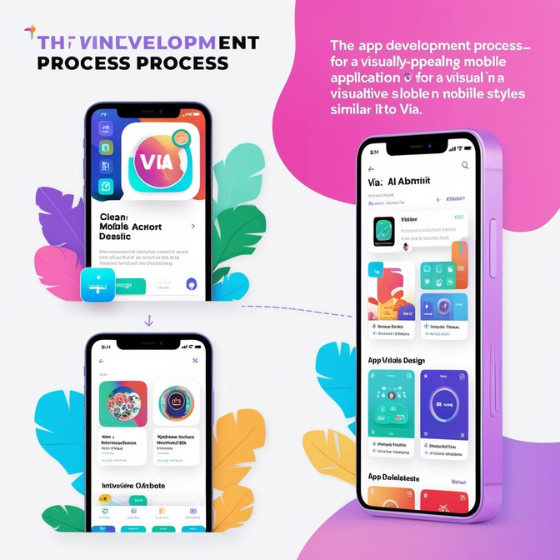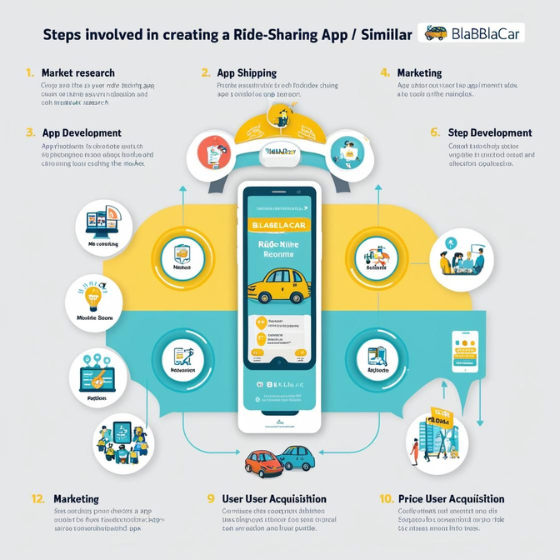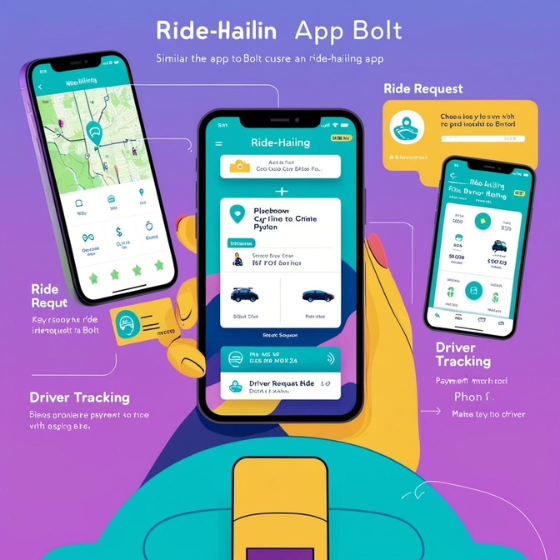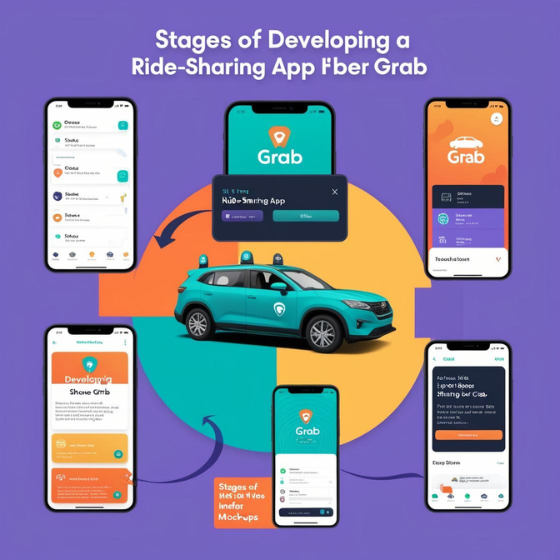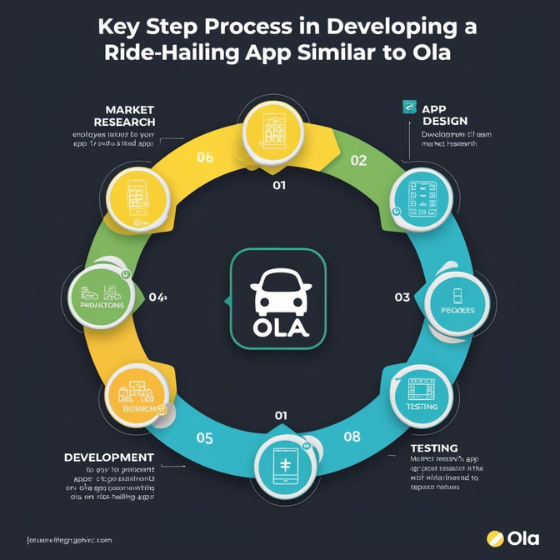How to Make an App Like via: A Complete Guide
Did you know that over 6 billion people around the world now own a smartphone? The mobile app industry has become a fundamental part of our daily lives, offering a broad spectrum of services and experiences that shape how we work, communicate, and entertain ourselves. One category of apps that continues to rise in popularity is transportation and ride-sharing apps, such as Via. If you’ve ever wondered how to make an app like Via and launch your own version of this highly successful service, you’re in the right place! In this blog, we’ll guide you through the process of creating a ride-sharing app like Via, exploring the steps, features, and key considerations involved. Whether you’re a budding entrepreneur or an established business looking to expand, this comprehensive guide will give you actionable insights on how to build a successful app from the ground up.
1. Understanding the Basics of a Ride-Sharing App Like Via
Before diving into the technical aspects of creating an app like Via, it’s essential to understand the core concept behind it. Via is a ride-sharing service that optimizes routes, grouping passengers with similar destinations to create a more efficient and cost-effective transportation solution. It aims to reduce traffic congestion and carbon emissions while offering passengers a reliable, affordable alternative to traditional taxis or private rides. Understanding the business model and unique features of Via can help you design your app in a way that provides a similar experience while adding your own twist.
So, how to make an app like Via? Start by identifying the core features that set Via apart:
- Route Optimization: Via uses sophisticated algorithms to match passengers with similar routes, reducing travel time and cost.
- Real-time Tracking: Users can track their ride in real-time, enhancing transparency and trust.
- Car Pooling: The app encourages carpooling to make the service more affordable and eco-friendly.
- Seamless Payments: Integrated payment gateways ensure easy, secure transactions.
- User Profiles and Ratings: Both drivers and passengers can rate each other, ensuring high-quality interactions.
Once you understand these fundamental features, the next step is to determine how you can integrate them into your own app.
2. Key Features to Include When Building an App Like Via
When considering how to make an app like Via, it’s important to think through the user experience and essential features. Below are the key features that will form the backbone of your app:
- User Registration and Profile Management: Allow users to create personalized profiles with details like name, phone number, payment methods, and preferences. Profile management will also enable you to send personalized recommendations or offers based on user behavior.
- Ride Request System: A crucial feature that allows users to request rides, choose their pick-up and drop-off locations, and see the estimated fare before confirming their ride.
- Ride Matching Algorithm: Develop an intelligent matching system that pairs riders with nearby drivers heading in the same direction. This can help optimize routes and reduce wait times.
- In-app Payment Gateway: Integrate a secure payment system that allows users to pay for their rides seamlessly, whether by credit card, debit card, or digital wallet.
- Driver and Passenger Rating System: Incorporate a rating system that allows passengers to rate their drivers and vice versa. This feature encourages accountability and helps maintain high service standards.
- Push Notifications: Use notifications to keep users updated about ride status, driver location, promotions, and more.
These features will set the foundation for your app, but it’s important to focus on creating an intuitive user interface (UI) and seamless user experience (UX) to ensure customers enjoy using your platform.
3. Choosing the Right Technology Stack for Your App
When learning how to make an app like Via, the technology stack plays a pivotal role in the development process. Choosing the right programming languages, frameworks, and tools will ensure your app is scalable, secure, and performant. Here’s an overview of the most commonly used technologies for developing ride-sharing apps:
- Front-End Development: To create a visually appealing and easy-to-use app, you can use technologies such as React Native (cross-platform), Swift (iOS), and Kotlin (Android). React Native allows you to build an app for both iOS and Android simultaneously, saving time and resources.
- Back-End Development: For the server-side of your app, you can use Node.js, Ruby on Rails, or Django. These frameworks provide robust back-end functionality, such as user authentication, data storage, and real-time updates.
- Database Management: A reliable database is essential for storing user data, ride information, and payment details. Popular databases for ride-sharing apps include MongoDB, MySQL, and PostgreSQL.
- Mapping and Location Services: For real-time tracking and navigation, you’ll need to integrate mapping services like Google Maps API or Mapbox. These services help users track their ride and find nearby drivers efficiently.
- Payment Gateway Integration: To handle payments securely, integrate payment processors such as Stripe, PayPal, or Braintree. This will allow users to pay for their rides directly through the app.
By selecting the appropriate tech stack, you ensure your app’s scalability and ability to handle high traffic volumes, especially as your app grows in popularity.
4. Monetization Strategies for Your Ride-Sharing App
One of the most common questions when considering how to make an app like Via is, “How will I make money?” There are several monetization strategies to explore, including:
- Commission-Based Model: Take a percentage of each ride fare as a commission. This is the most common model used by ride-sharing apps like Via and Uber.
- Subscription-Based Model: Offer premium features, such as priority booking, discounted rides, or exclusive access to rides, for a fixed monthly or yearly subscription fee.
- Advertising: Include ads within your app, whether through banners, interstitials, or video ads. This can generate additional revenue, especially if you have a large user base.
- Surge Pricing: Implement surge pricing during peak hours or high-demand periods. This helps balance the demand and supply while maximizing revenue.
When deciding on your monetization strategy, it’s essential to strike a balance between profitability and user satisfaction. You don’t want to price out potential customers but also need a model that supports long-term growth.
5. Marketing Your Ride-Sharing App
Once your app is developed and ready to launch, the next step is to attract users and establish your brand. Here are a few marketing strategies to promote your app:
- Social Media Marketing: Use platforms like Facebook, Instagram, and Twitter to engage potential users. Create compelling content showcasing the benefits of your ride-sharing app and share success stories.
- Referral Programs: Encourage users to invite their friends by offering incentives like free rides or discounts. Referral programs can quickly grow your user base.
- Search Engine Optimization (SEO): Optimize your app’s website and blog content around keywords like “how to make an app like Via” and “ride-sharing app development” to drive organic traffic.
- App Store Optimization (ASO): Optimize your app’s listing on Google Play and the Apple App Store by using the right keywords, offering clear descriptions, and encouraging positive reviews.
Building an app like Via is only half the battle—marketing it effectively will help ensure its success in a competitive market.
Conclusion
Creating an app like Via requires careful planning, development, and execution. From understanding the core features of ride-sharing apps to selecting the right technology stack and implementing effective monetization strategies, there are several factors to consider. By following the steps outlined in this guide, you’ll be on the right path to developing a robust, user-friendly app that meets the needs of modern travelers.
Ready to take your app development journey to the next level? At Sodio, we specialize in building scalable, innovative mobile applications that drive results. Whether you’re looking to create a ride-sharing app like Via or explore other app ideas, our team of experts is here to help. Visit our Mobile App Development Services page to learn more and get started today!
By creating an app like Via, you can revolutionize the way people move around cities while creating a profitable business model that serves the needs of today’s users. Contact us to see how we can turn your app ideas into reality!
